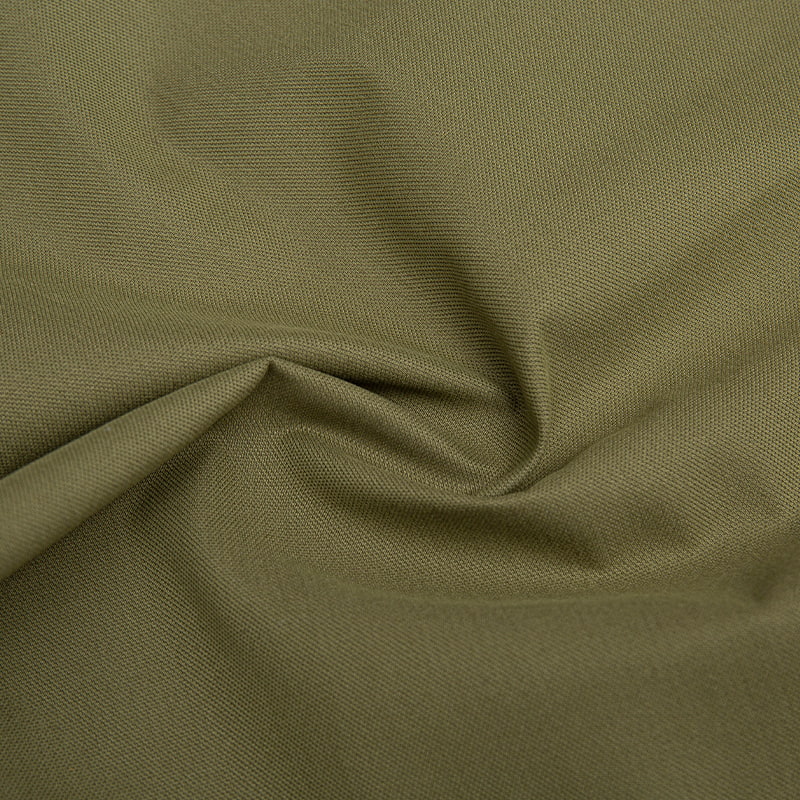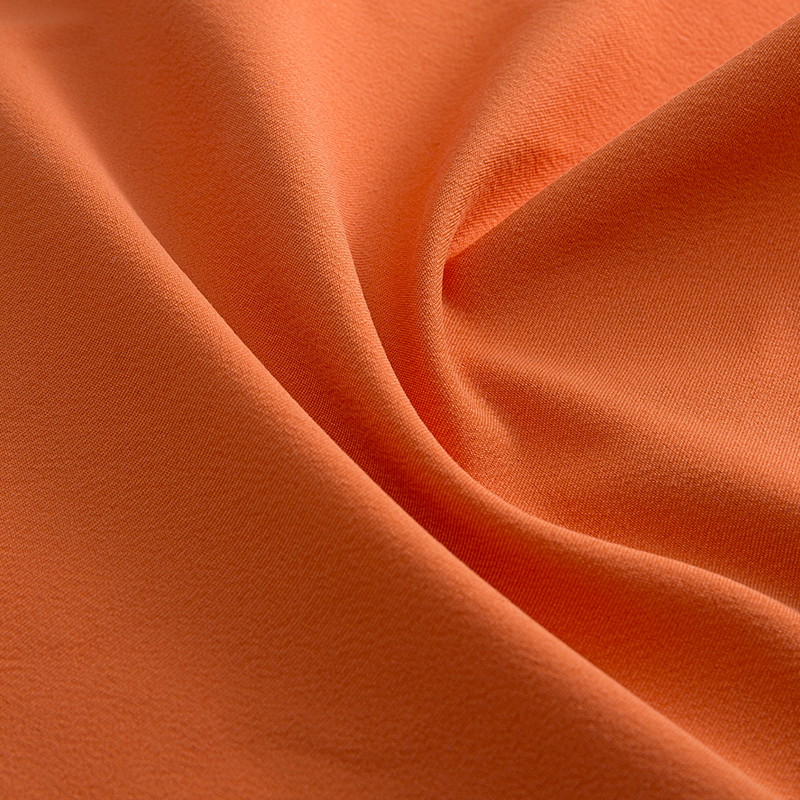
A comprehensive buyer's guide to the stretch fabric series!
A comprehensive buyer's guide to the stretch fabric series!
One、The core principle of stretch fabrics: Why can they stretch?
1. The addition of elastic fibers
The core of stretch fabrics is the mixing of a fiber called "spandex" (commonly known as "elastic yarn"). Ordinary fabrics such as pure cotton and polyester have limited elasticity, but after adding 5%-20% spandex, the fabric can stretch and retract freely like a rubber band. Spandex is like a "spring" hidden in the fabric, which will automatically rebound after stretching.
2. The secret of weaving structure
Weft knitting: The coils are connected to each other like sweaters, which are naturally elastic. The elasticity is doubled after adding spandex.
Warp knitting: The structure is more stable and suitable for clothing that requires longitudinal stretch (such as sports bras).
Woven stretch fabric: Spandex yarn is added to traditional plain/twill fabrics to achieve "invisible elasticity" (such as stretch jeans).
Two、Family members of stretch fabrics: common types and characteristics
1. Daily main force
•Stretch cotton (cotton + spandex)
Advantages: breathable and sweat-absorbent + elastic, T-shirts and underwear are not tight.
Pit points: easy to loosen after multiple stretching, collars and cuffs are easy to deform.
•Stretch denim (cotton/polyester + spandex)
Features: The key to tight jeans being able to squat without cracking! The higher the spandex content (8%-15%), the closer and softer it is.
Note: Inferior stretch denim is prone to bulging knees after washing because spandex has poor resilience.
2. Essential for sports and fitness
•Polyester spandex (polyester + spandex)
Advantages: quick-drying, wrinkle-resistant, high elasticity, commonly used in tights in gyms.
Disadvantages: less breathable than cotton, sweating may suffocate the skin.
•Nylon spandex (nylon + spandex)
Scenario: dedicated to swimsuits and yoga clothes! Nylon is chlorine-resistant and sun-resistant, and spandex provides a sense of wrapping.
Shopping tips: The spandex content of swimsuits must be greater than 15%, otherwise they will become loose after entering the water.
3. High-end functional fabrics
•One-way stretch fabric
Stretches in only one direction (such as vertically), used for suit sleeves and shirt backs, and stretches without being tight during activities.
•Memory stretch fabric
It can automatically return to flatness after being crumpled, and is often used for non-ironing shirts and overalls.
Three、 Buyers must read: Golden rules for choosing stretch fabrics
1. Elasticity needs
Micro-stretch (5%-8% spandex): shirts, suits, need to fit without being restrictive.
Medium-stretch (10%-15% spandex): jeans, leggings, balance comfort and shaping.
High-stretch (15%-20% spandex): dance clothes, sports compression clothing, close to the muscles without sliding.
2. Key indicators measurement method
Rebound test: Use your hands to stretch the fabric, and observe whether it recovers quickly after loosening. Slow rebound = easy to deform!
Durability inspection: Stretch 20 times repeatedly to see if the lines turn white and there is local looseness.
Color fastness verification: White cloth rubs the fabric, and the color fades severely = easy to fade after washing and stain other clothes.
3. Beware of cheap traps
Fake elasticity: No spandex, relying on woven structure to simulate elasticity (such as ribbed cloth), it will collapse after a few wears.
Recycled spandex: Recycled from discarded spandex, poor resilience and short lifespan, 30% cheaper but easy to break.
Coating camouflage: Spray elastic coating on ordinary fabric, feel hard, and the coating will fall off after washing.
Four、Application scenario guide: What kind of stretch fabric should be used for what kind of clothes?
1. Underwear/home clothes
Preferred stretch cotton/modal + spandex: close-fitting, soft and breathable, 5%-10% spandex content is enough. Avoid polyester-ammonia (stuffy sweat).
2. Sports/outdoor equipment
High-elastic nylon-spandex/polyester-spandex fabric:
Choose polyester-spandex (lightweight and quick-drying) for running clothes
Choose nylon-spandex (corrosion-resistant) for swimsuits/diving suits
Choose four-way stretch woven fabric (anti-scratch) for hiking pants
3. Fashion wear
Tight skirt/dress: Choose weft-knitted stretch knitting, which has a good drape and is not bloated.
Wide-leg pants/suits: Choose one-way stretch woven fabric to avoid knee bulges when sitting down.
Five、Maintenance minefield: How to extend the life of stretch fabrics
1. Washing taboos
No hot water: >40℃ water will melt spandex! Hand washing in cold water is best.
No bleach: bleaching ingredients corrode spandex and cause it to break.
Avoid exposure to the sun: UV rays make spandex brittle, and drying in the shade can extend its life by 2 times.
2. Storage tips
Do not fold or compress: Folding places are prone to lose elasticity over a long period of time, so it is recommended to roll them up for storage.
Moisture-proof and insect-proof: Spandex is easily hydrolyzed when exposed to moisture, and mothballs cause fiber hardening.
Six、Industry jargon analysis: understand the supplier's subtext
•"50D four-way stretch": 50D = yarn thickness (the smaller the number, the thinner), four-way stretch = high elasticity in both warp and weft directions.
•"Double-sided fabric" = different textures on the inside and outside (such as smooth outside and fluffy inside), commonly used in sweatshirts.
•"Singeing process" = the pilling on the surface of the fabric is burned off by fire, making it smoother and less prone to pilling.
Seven、Special needs scenario strategy
1. Pregnant women/large size clothing
Fabric selection: longitudinal stretch > transverse stretch (avoid tightening the waist and abdomen), spandex content must be ≥15%.
Process requirements: "chain stitch" sewing is required at the seams (the stitches extend synchronously when stretched to prevent cracking).
2. Body shaping clothing/medical pressure clothing
Gradient pressure design: spandex content in the lower limbs > waist and abdomen, promote blood circulation.
Certification standards: Medical-grade stretch fabrics must pass ISO 13485 certification (biocompatibility test).
Eight、Future Trends: Overview of New Elastic Materials
•Bio-based spandex: extracted from corn stalks, environmentally friendly and degradable (reduces microplastic pollution).
•Warm-sensitive stretch fabric: elasticity increases automatically when the temperature rises (suitable for muscle expansion during exercise).
•Conductive stretch fiber: woven with silver threads, used for smart wearables (such as sports bras that monitor heart rate).
Nine、Buyer's rights protection guide: How to provide evidence for quality problems?
•Elastic failure: Send to a third-party testing agency to measure the "permanent deformation rate" (national standard GB/T 3923.1-2013, after stretching 30 times, deformation > 10% can be claimed).
•Broken yarn pilling: Take photos to record the broken spandex yarn on the surface of the fabric to prove that it is a low-quality recycled material.
•Fading pollution: Provide a comparison picture before and after washing + washing label to prove compliance operation.
Ten、The Ultimate Avoidance List
•Three things not to buy: no ingredient label, price 30% lower than the market price, greasy feel (silicone softener disguise).
•Three things to ask: spandex brand (LYCRA® is preferred), weight (180-220g/m² in summer, >300g/m² in winter), whether it has been pre-shrunk.
•Three things to test: horizontal/vertical stretch rebound, tension at the seam, and sweat color fastness.



 English
English 

 PREV
PREV








